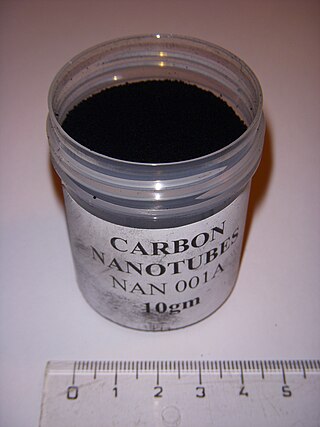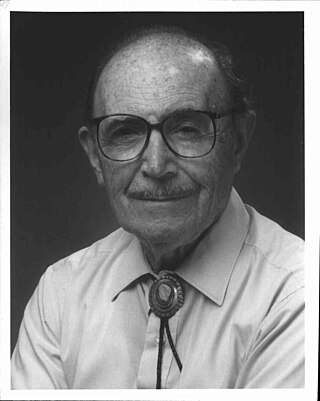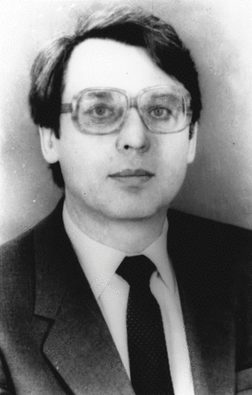Related Research Articles

An electron and an electron hole that are attracted to each other by the Coulomb force can form a bound state called an exciton. It is an electrically neutral quasiparticle that exists mainly in condensed matter, including insulators, semiconductors, some metals, but also in certain atoms, molecules and liquids. The exciton is regarded as an elementary excitation that can transport energy without transporting net electric charge.

Photoluminescence is light emission from any form of matter after the absorption of photons. It is one of many forms of luminescence and is initiated by photoexcitation, hence the prefix photo-. Following excitation, various relaxation processes typically occur in which other photons are re-radiated. Time periods between absorption and emission may vary: ranging from short femtosecond-regime for emission involving free-carrier plasma in inorganic semiconductors up to milliseconds for phosphoresence processes in molecular systems; and under special circumstances delay of emission may even span to minutes or hours.

An F center or Farbe center is a type of crystallographic defect in which an anionic vacancy in a crystal lattice is occupied by one or more unpaired electrons. Electrons in such a vacancy in a crystal lattice tend to absorb light in the visible spectrum such that a material that is usually transparent becomes colored. The greater the number of F centers, the more intense the color of the compound. F centers are a type of color center.

A polaron is a quasiparticle used in condensed matter physics to understand the interactions between electrons and atoms in a solid material. The polaron concept was proposed by Lev Landau in 1933 and Solomon Pekar in 1946 to describe an electron moving in a dielectric crystal where the atoms displace from their equilibrium positions to effectively screen the charge of an electron, known as a phonon cloud. This lowers the electron mobility and increases the electron's effective mass.
X-ray absorption near edge structure (XANES), also known as near edge X-ray absorption fine structure (NEXAFS), is a type of absorption spectroscopy that indicates the features in the X-ray absorption spectra (XAS) of condensed matter due to the photoabsorption cross section for electronic transitions from an atomic core level to final states in the energy region of 50–100 eV above the selected atomic core level ionization energy, where the wavelength of the photoelectron is larger than the interatomic distance between the absorbing atom and its first neighbour atoms.

In quantum biology, the Davydov soliton is a quasiparticle representing an excitation propagating along the self-trapped amide I groups within the α-helices of proteins. It is a solution of the Davydov Hamiltonian.
Vibrational circular dichroism (VCD) is a spectroscopic technique which detects differences in attenuation of left and right circularly polarized light passing through a sample. It is the extension of circular dichroism spectroscopy into the infrared and near infrared ranges.

Two-dimensional infrared spectroscopy is a nonlinear infrared spectroscopy technique that has the ability to correlate vibrational modes in condensed-phase systems. This technique provides information beyond linear infrared spectra, by spreading the vibrational information along multiple axes, yielding a frequency correlation spectrum. A frequency correlation spectrum can offer structural information such as vibrational mode coupling, anharmonicities, along with chemical dynamics such as energy transfer rates and molecular dynamics with femtosecond time resolution. 2DIR experiments have only become possible with the development of ultrafast lasers and the ability to generate femtosecond infrared pulses.

Alexander Sergeevich Davydov was a Soviet and Ukrainian physicist. Davydov graduated from Moscow State University in 1939. In 1963-1990 he was Director of Institute for Theoretical Physics of the Ukrainian Academy of Sciences.

The optical properties of carbon nanotubes are highly relevant for materials science. The way those materials interact with electromagnetic radiation is unique in many respects, as evidenced by their peculiar absorption, photoluminescence (fluorescence), and Raman spectra.

The Institute of Physics (IOP) of the National Academy of Sciences of Ukraine founded in 1926 is the oldest research institution of physical science within the academy. Being on the path of both infrastructure development and research diversification for more than 80 years, the institute has eventually originated five more specialized research institutions.
Emmanuel I. Rashba is a Soviet-American theoretical physicist of Jewish origin who worked in Ukraine, Russia and in the United States. Rashba is known for his contributions to different areas of condensed matter physics and spintronics, especially the Rashba effect in spin physics, and also for the prediction of electric dipole spin resonance (EDSR), that was widely investigated and became a regular tool for operating electron spins in nanostructures, phase transitions in spin-orbit coupled systems driven by change of the Fermi surface topology, Giant oscillator strength of impurity excitons, and coexistence of free and self-trapped excitons. The principal subject of spintronics is all-electric operation of electron spins, and EDSR was the first phenomenon predicted and experimentally observed in this field.
The Rashba effect, also called Bychkov–Rashba effect, is a momentum-dependent splitting of spin bands in bulk crystals and low-dimensional condensed matter systems similar to the splitting of particles and anti-particles in the Dirac Hamiltonian. The splitting is a combined effect of spin–orbit interaction and asymmetry of the crystal potential, in particular in the direction perpendicular to the two-dimensional plane. This effect is named in honour of Emmanuel Rashba, who discovered it with Valentin I. Sheka in 1959 for three-dimensional systems and afterward with Yurii A. Bychkov in 1984 for two-dimensional systems.
Kirill Borisovich Tolpygo was a Soviet physicist and a corresponding member of the National Academy of Sciences of Ukraine. He was recognized for his works on condensed matter theory; the theory of phonon spectra in crystals; electronic structure and defects in insulators and semiconductors; and biophysics. He created the Department of Theoretical Physics and the Department of Biophysics at Donetsk National University. Tolpygo was a teacher, mentor and scientific adviser to graduate students. Tolpygo was awarded the Order of the Great Patriotic War.
Solomon Isakovych Pekar was a Soviet theoretical physicist, born in Kyiv, Ukraine. He was a full Member of the Ukrainian Academy of Sciences and is known for his fundamental contributions to condensed matter physics, especially for introducing and advancing the concept of polaron as a charge carrier in solids.
Antonina Fedorivna Prykhotko, was a Soviet and Ukrainian experimental physicist. She was an Academician of the National Academy of Sciences of Ukraine and is known for her fundamental contributions to the condensed matter spectroscopy.
Giant oscillator strength is inherent in excitons that are weakly bound to impurities or defects in crystals.

Elias Burstein was an American experimental condensed matter physicist whose active career in science spanned seven decades. He is known for his pioneering fundamental research in the optical physics of solids; for writing and editing hundreds of articles and other publications; for bringing together scientists from around the world in international meetings, conferences, and symposia; and for training and mentoring dozens of younger physicists.
Gregory Evgenievich (Ezekielevich) Pikus was a Soviet theoretical physicist whose contributions strongly influenced developing physics of semiconductors. Among his most fundamental contributions are development of the method of invariants in band theory of solids, the Bir-Aronov-Pikus mechanism of spin relaxation of electrons, prediction of the circular photogalvanic effect, and theory of weak localization in noncentrosymmetric structures. His three monographs reflect the focus points of the theory of semiconductors during the second half of the 20th century from transistors to band theory to properties to artificial nanostructures.

Zvyagin Anatolii Illarionovich is the author of pioneer studies of dynamical, magnetic, and thermal properties of low-symmetric and low-dimensional magnetic insulators.
References
- ↑ V. L. Broude and A. F. Prikhot'ko, Absorption spectra of benzine monocrystals in polarized light, Zh. Eksp. Teor. Fiz. 22, 605 (1952)
- ↑ V. L. Broude, V. S. Medvedev, and A.F. Prikhot'ko, Spectral investigations of benzine crystals at 20.4 K, Opt. Spektrosk. 2, 317 (1957)
- ↑ A. F. Prikhot'ko, Izv, AN SSSR Ser. Fiz. 7, 499 (1948) http://ujp.bitp.kiev.ua/files/journals/53/si/53SI18p.pdf Archived 2016-03-05 at the Wayback Machine
- ↑ A. S. Davydov, Theory of Absorption Spectra of Molecular Crystals, Zh. Eksp. Teor. Fiz. 18, 210 (1948) http://ujp.bitp.kiev.ua/files/journals/53/si/53SI14p.pdf
- ↑ V. L. Broude, E. I. Rashba, and E.F.Sheka, Anomalous impurity absorption in molecular crystals near exciton bands, Sov. Phys. - Doklady 6, 718 (1962)
- ↑ V. L. Broude and E. I. Rashba, Exciton absorption in mixed molecular crystals, Sov. Phys. - Solid State 3, 1415 (1962)
- ↑ C. Paul, J. Wang, W. C. Wimley, R. M. Hochstrasser, and P. H. Axelsen, Vibrational Coupling, Isotopic Editing, and β-Sheet Structure in a Membrane-Bound Polypeptide, J. Am. Chem. Soc., 126, 5843-5850 (2004).